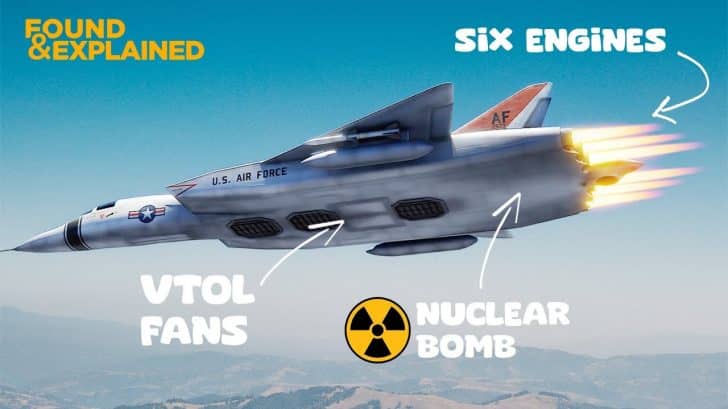In the 1960s, Republic started a daring new project led by the same people behind the legendary P-47 and F-84. This aircraft, however, was different. It was the Cold War, so it just had to be an aircraft that was also capable of carrying a nuclear bomb. Later on, this aircraft would prove to be more than the US could chew. After all, this was America’s first operational supersonic VTOL jet – the Republic AP-100.

Need For Speed
Back in the ‘60s, both the US Air Force and Navy were looking for a new aircraft to add to their roster. And so, the Tactical Fighter Experimental (TFX) program was created.
The TFX aimed to produce an aircraft that could work for both forces, carry a large payload and fuel, and feature twin engines that offered high, supersonic speeds. In addition, the supposed aircraft should also have two seats and (should probably) have variable geometry wings to fit onboard carriers. One of those who sent in their proposal was Republic Aviation.
Republic AP-100
This concept featured a hybrid delta wing design capable of reaching Mach 2.3. Most notably, this aircraft would have been powered by six General Electric J-85 turbojet engines – the same engines used for the F-5. Six is, for sure, overkill for most fighter planes – but the AP-100 wasn’t your typical fighter.

Not Like Other Fighters
It was capable of taking off and landing vertically, with the engines providing power for two centrally-lined lift fans for such maneuvers. Behind those two lift fans was a bomb bay capable of carrying a nuclear bomb – and behind the bomb bay was another lift fan used for fine adjustments during take-off and landing. Furthermore, the initial prototype was a single-seater but drawings and artwork revealed that there was a two-seater variant being made as well to meet the program’s requirements.
Running Into Issues
But with such a flat fuselage that housed most of its features, there wasn’t enough space for fuel. To get around this issue, the AP-100’s fuel tanks would have been fitted behind the cockpit in the tail section around the nuclear bomb. Some fuel would be stored in the wings as well, but most of those spaces would have been allocated to the AIM-9s and AIM-7s anyway. Then again, why would a fighter carry a nuclear bomb in the first place?
Placing a nuclear bomb so far back would have moved the center of gravity – and after dropping it, the pilot would have had trouble controlling the aircraft. Not to mention, taking off with a nuclear bomb in rough weather isn’t the best idea.

Last Hail Mary
Republic’s last proposal had small foldable wings, further reducing drag while in swept mode. The aircraft’s nuclear bomb at the back was also thrown away, while its VTOL capability was scrapped from the design. With fewer features but a more solid design, the last proposal was expected to fit all the needs of both the Air Force and the Navy.
Upon receiving all of the proposals under the TFX program, Robert McNammara ultimately chose General Dynamics’ design due to it sharing the most parts between the Navy and Air Force’s versions. Today, we know that aircraft as the F-111 Aardvark.



